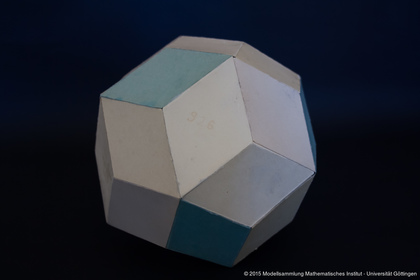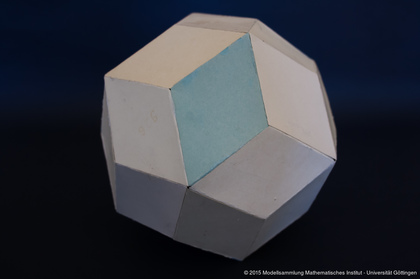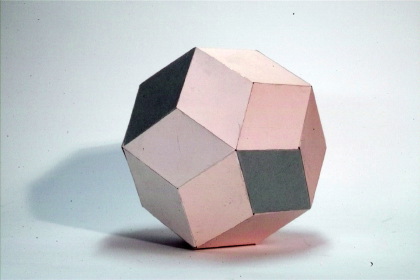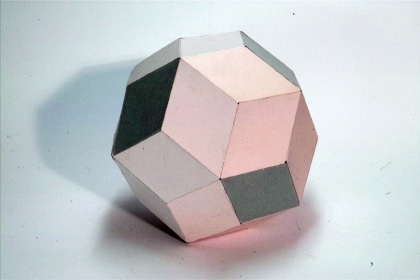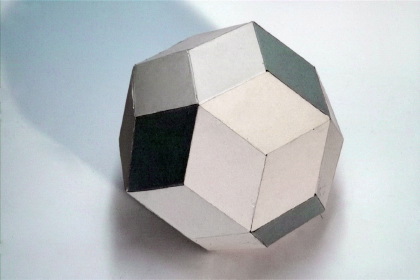Rhombusthirtyflat with the symmetries of the icosahedron group
Model 926
Description
Rhombusthirtyflat with the symmetries of the icosahedron group.
Additions
A rhombusthirtyflat (also known as rhombic triacontahedron) is bounded by 30 congruent rhombuses. The angle between two adjoining rhombuses is 144°. A rhombusthirtyflat has 32 vertices and 60 edges. It is dual to the icosidodecahedron, which has 32 faces and 60 vertices, see also model 480 and 481.
A symmetry of a solid, is a rotation of the three-dimensional-space mapping the solid to itself. The icosahedron group consists of 120 symmetries of the icosahedron. These symmetries are rotations, reflections or rotary reflections of the three-dimensional-space mapping the solid to itself.
Dual solids, like icosahedron and dodecahedron, have the same symmetries. An Archimedean solid (for example the icosidodecahedron) has the same symmetries as the Platonic solid (for example the icosahedron), from which it arises. Since the rhombic triacontahedron is dual to the icosidodecahedron, it has the same symmetries as the icosahedron.
The rhombic triacontahedron is one of the 13 Catalan solids. Catalan solids are dual to the 13 Archimedean solids. All faces of a Catalan solid are congruent and all angles between to adjoining faces are equal.
Showcase of this model is Case number 20
References
Coxeter. Regular polytopes, plate I, 12.


